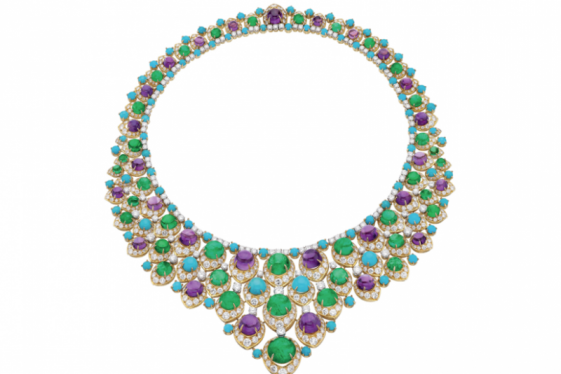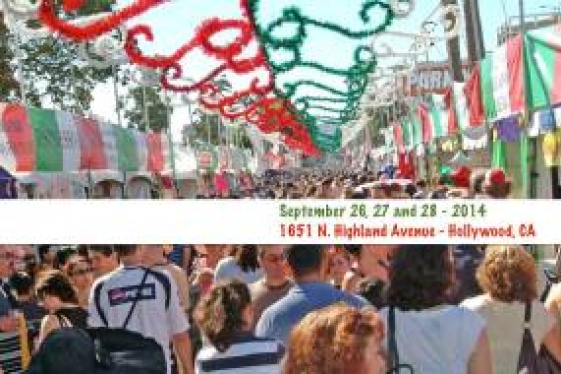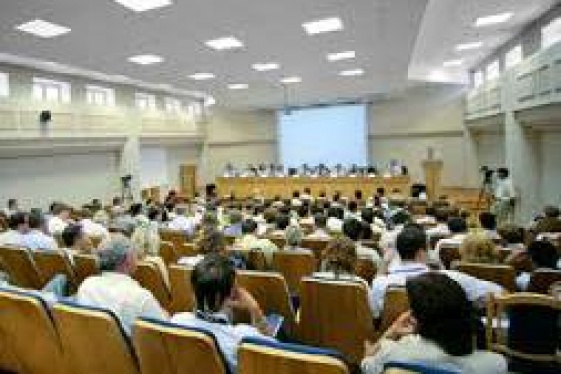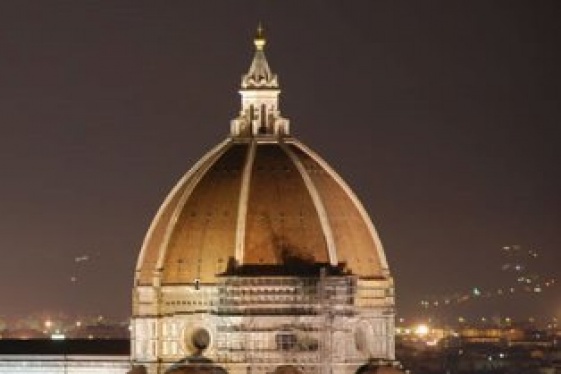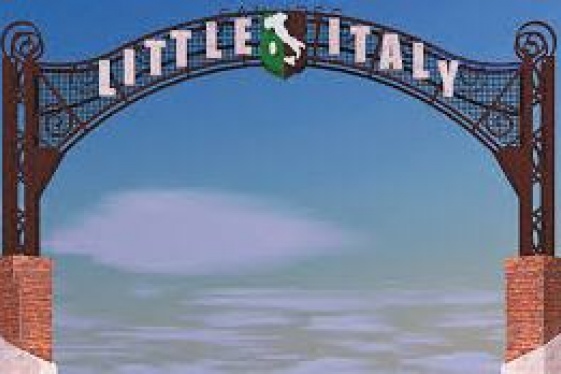
Davide Gasparotto (Senior Curator of Paintings at the J. Paul Getty Museum)
L'Italia e la sua arte, una superpotenza culturale molto ben rappresentata negli Stati Uniti

Imagine if the artistic heritage was a sports discipline, or if it was as measurable as the economic dynamics are. Italy would have a primacy that neither sport nor the economy have ever seen, something that justifies the definition of "cultural superpower".
This overpower is also a huge responsibility. Those who take care of it professionally know this well, and they represent another of our excellence today. Some of these great Italians have been called into important roles in some of the most important American cultural institutions. One of these, a friend of We the Italians, is Davide Gasparotto, to whom we ask to tell us something about the relationship between Italy and the United States from an art point of view.
Davide, after a long experience in the Italian Superintendencies, in Parma, Piacenza and Modena, almost three years ago you were appointed Senior Curator of Paintings at the J. Paul Getty Museum in Los Angeles. How is this California experience?
It is an extraordinarily rich and interesting experience that has brought me in contact with a reality that is in many aspects very different from those I worked in before. Getty is not just a museum, it's like a big university campus, where beside the museum several institutions coexist - the Research Institute, the Conservation Institute, the Getty Foundation - and this helps create an atmosphere of great intellectual stimulation, as well as attracting a large international scientific community.
We can then count on exceptional economic resources (the endownment at this time is around 6.2 billion dollars) for an American museum ... I cannot say that here we can do everything, but we can really do much, assisted by specialists in numerous areas (restorers, librarians, computer scientists, craftsmen, communicators and fundraising staff).
What differences did you find in your work between Italy and the United States?
Well, the first is that in America there is not that urban and monumental "context" that surrounds the museum in Italy, so the museum is a "microcosm", everything revolves around it.
A part of the job is the same: curating the collection (in my case just over 400 paintings), promoting study and research on artworks, arranging their outfitting, and organizing exhibitions. The newest and most exciting aspect for me is undoubtedly represented by the acquisitions: the collection here is in constant growth and the ambition is to create a collection that represents - at the highest level of quality - the development of European art from the Middle Ages to the threshold of the twentieth century avant-garde. Since I've been here, from December 2014, we bought four very important paintings, two Italians and two French: the extraordinary Danae by Orazio Gentileschi (ca. 1621-23), the Portrait of the sculptor Philippe Laurent Roland by François-André Vincent (1797), the masterpiece of Jean Antoine Watteau La Surprise (ca. 1718-19), and finally the superb Madonna and Child with Santi Giovanni Battista and Mary Magdalene by Parmigianino (ca. 1535-40). I am particularly proud of this last acquisition. Considering the long years I spent in Parma, the painting represents to me a symbol of my passage from Italy to the United States, but also the continuity with my past.
Maybe the bigger difference compared to my Italian experience is that I really am a "full time" curator here: I still have to deal with practical or sometimes bureaucratic aspects, but they are all pertinent to my work as curator. Getty is a big "machine", there are so many gears and so many meetings, but it's a very oiled machine and everything runs on well-defined tracks. Unlike Italy, there is a lot of teamwork here, the roles are very clear and the hierarchy is equally precise. The institution invests heavily in staff (outsourcing is very limited and virtually reduced to catering) and training.
Then, of course, the involvement of the private sector is sought. In my case, the painting department that I lead is supported by a Council (comparable to our Museum Friends), a group of about thirty individuals, including many collectors, which mainly supports conservation projects that we do in collaboration with other museums who cannot bear the costs of a restoration, or have no restorers in their staff. The relationship is solved in a mutual benefit: the museum can have a completely restored painting, and for a time we can exhibit in our galleries a masterpiece from another collection. Sometimes, as a result of technical investigations that are always carried out, there are also exhibition projects around the paintings we restore, as in the recent case of a small but precious exhibition dedicated to Giovanni Di Paolo, an extraordinary painter of the fifteenth century from Siena. At the inauguration we had the honor to have our Ambassador Armando Varricchio as guest, who promised to return this year for the inauguration of the exhibition dedicated to Giovanni Bellini.
The relationship with private individuals, which is often superficially debated in the Italian press, is based here on a mutual benefit: the museum receives financial support and the private gets (consistent) tax deductions. There are no other forms of "publicity" for the private, even if it is a business. It must be said that philanthropy has a deep ethical reason in this country: here if you have become rich and successful, it is a duty to "give back" to society a part of your wealth, in the form of donations to cultural institutions, research, hospitals, etc ...
Then there is the relationship with private collectors and even in this case there is often a mutually beneficial relationship. Maintaining relations with collectors, even helping them with our expertise, we are aware of important works that could one day be available on the market, or they could be the subject of a donation, or they can temporarily be shown in our galleries, which are thus enriched with important "guests" together with the paintings of our collection.
Recently the website US in Italy, managed by the Italian Embassy in Washington, has gone live with a page dedicated to Italian art in the United States, very well made, which lists and geolocalizes hundreds of Italian artworks in 39 museums active in 26 American cities. What can Italy do to further enhance its art in America?
The Embassy's initiative is unquestionably praiseworthy and shows the incredible richness of Italian artwork in the American museums, even in the lesser-known ones. After all, if you just pick up the Census of Pre-Nineteenth-Century Italian Paintings in North-American Collections by Burton Fredericksen (the first curator of Italian painting at the Getty!) and Federico Zeri (1972), or browse the web site of Kress Foundation, which has placed many Italian Renaissance paintings of its own in many small museums scattered throughout the United States, you can reach out to the depth of the presence of Italian works in American museums.
Italy is generally already a very generous lender to many Italian art exhibitions that are organized here in the United States. What I would like to do is to go beyond the concentration on the usual big names - Leonardo, Michelangelo, Raffaello, Caravaggio – by showing the richness and variety of our country, the small wonderful cities of the Italian province, their extraordinary and sometimes neglected artistic traditions. I would love to see more exhibitions and initiatives involving artists or periods of our less known and popular history, which can then be a stimulus to travel to parts of Italy that are not the congested Rome, Florence and Venice. I talked to so many Americans surprised and enchanted by Palermo, Naples, Emilian cities such as Bologna, Modena, Parma; by Turin and the Venetian cities - Verona, Vicenza, Padua - or by entire regions such as Marche and Umbria.
Here at Getty I would like to organize an exhibition on the Italian art of the nineteenth century, which has been widely researched and rediscovered in Italy for the last thirty years, but which is still very little known in America. We recently bought a wonderful and great pastel by Giovanni Segantini ... who knows, this could be the seed for a future project.
What are the three most important Italian artworks permanently exhibited in the United States, according to you?
There are really many of them, and it's really very difficult to narrow the choice to only three works. I would say that for me there are at least five: the San Francis in the Desert by Giovanni Bellini at the Frick Collection in New York; the Rape of Europa by Titian, at the Isabella Stewart Gardner in Boston; the Ginevra de 'Benci by Leonardo da Vinci and Alba Madonna by Raphael at the National Gallery of Art in Washington; and finally the San Giovanni Battista by Caravaggio at the Nelson Atkins Museum of Art in Kansas City.
And if we ask you about a little known artwork, something not that famous but that in your opinion one should definitely not miss?
My heart picture is undoubtedly the Flight into Egypt by Jacopo Bassano at the Norton Simon Museum in Pasadena. It is not only a masterpiece of great poetry, but it is also the work of the great Venetian painter who comes from the same city I was born and spent my childhood and adolescence in. But even here at the Getty there's a painting that is no doubt in my personal top ten, Pontormo's Alabardiere, one of the most intense portraits of the Italian Sixteenth century.
Do you think it is possible to involve in this the numerous associations of Italian Americans scattered all over America, often the first ambassadors of our country, who almost always place our art first when asked why they are proud of being Italians?
I would say that all the American museums that work in the field of Italian art have relationships first and foremost with our Institutes of Culture, which often are a point of aggregation of the Italian communities scattered in American cities. At least this happens here in Los Angeles. It is to be said that here in the States there are not only many Americans of Italian origin, but there are also many Italians - like me - who have recently moved for work reasons, and therefore our presence in this country is really very consistent.
Put aside for a moment the budget differences, sometimes very strong, what can we learn here in Italy from how America works in the art offer?
I would say that the most important thing in the United States is that the visitor's experience is always at the center: the museum must be a welcoming place, the visitor must not perceive a sense of inferiority (and therefore feel rejected) but feel comfortable. For this reason, just to give an example, we take so much care when we prepare the label for a given painting. Here, in fact, the essential information on a work - author, title, and execution technique - is always accompanied by a short text (about 100 words) where we try to explain, in plain words, what you see, the characteristics of the style, a detail of the iconography, an important information on the origin or the original placement of the painting. It may seem trivial, but it is very important and it is one of the main tasks of our curators, and it is not always easy to condense specialist knowledge in a short text that is understandable to everyone. That's why it's important to have highly specialized staff who know very well how to do the job. Here, staff - even the one from our large "education" department - is all internal, and not even for exhibitions we rely on those agencies of events and exhibitions that have overwhelmingly proliferated in Italy in recent decades, looking more at profit than at the scientific and educational value of the event. "Research" and "Education" here are and remain firmly at the center of the "Mission" of the museum.
Is there any help on this matter, according to you, coming from the recent announcement that - besides the bureaucratic problems encountered - has nominated non-Italian personalities to guide some important Italian museums and art sites?
There is no doubt that museum management in Italy needs a profound renewal, but I do not think that the focus point is represented by the presence or absence of foreigners in the direction of museums, a fact that normally happens here both in the US and in other European countries. The road chosen in Italy was that of divorce between museum management and protection of the territory, which remained in the hands of the Superintendencies. I do not think this is necessarily a negative thing, since the management (and valorisation) of a museum requires specific resources, commitment and professionalism that sometimes are distinct from those required working in a Superintendency.
The major problem of this reform is, in my opinion, that it divided the management of the artistic heritage into three large blocks: the new "independent" museums, the "small" museums now dependent on the new regional directorates, and the rest of the heritage spread all across the territory.
Independence, then, is always a relative concept; it is certainly not the total administrative and managerial independence of the American museums, since the umbilical cord with the Ministry (and politics) is always very strong. In a crucial sector like the one regarding their staff, to make just one example, the new directors in Italy are naturally not free to make their own choices as they do here.
Apart from the figures of the new directors, this enormous overturn has been practically done at no cost, and now all structures are in great distress because of the shortage of staff (indeed, most "new" offices are forced to share staff and officials, with issues that I can only imagine). Unfortunately, within the Ministry, a disparate trade union policy has favored the so-called "area passages" or "internal upgrades", with the odd outcome of preventing the entry of new technical staff and greatly lowering the professional level of officials. I do not know if the contest that has just come to an end, which involves the hiring of 500 new officials (architects, art historians, archaeologists), will be able to heal such a disastrous situation.
Beyond the facade of optimism propagated by Minister Franceschini, the problems to be faced are still enormous. I know several new directors (I am also part of the Scientific Committee of the Bargello Museum in Florence) and know that they are working very much, with energy and optimism. But they are generals leading armies without troops (and curators are not the only ones missing, but also restorers, administrative figures, registrars, computer scientists, communication officers).
So it is also for the new regional museum directors, who are the real "cinderellas" of this reform. I think that the case of Florence is emblematic: before, the collections of the most visited museums (Uffizi and Pitti, Academy) helped to support the "minor" sites, such as the Medici Villas, the Cenacles, etc. Now, suddenly deprived of this support (since Uffizi and Academy are "independent" and hold it all by themselves), the managements of these "minor" museums are in serious difficulties and are not gratified by the funding reserved for the new "independent" museums.
Old Superintendencies are dominated by architects, as many officials (especially art historians) preferred the safe harbor of the great museums, the flagship of the Franceschini Reform. The serious situation of territorial protection, which for me was a very important training gym in the past years between Parma and Piacenza, has been dramatically represented by the shortcomings and delays in the recent earthquake in Lazio and in the Marche and Umbria. Unfortunately, restoration and ordinary protection do not make news as much as the Uffizi, Pompei, the Colosseum.
I believe that museums are very important, and that it is important to manage them in the best way, but the wealth of a country like ours is not only in museums. It lies mainly in that extraordinary continuum of our heritage, the inextricable unity between landscape, the artistic heritage spread out in the territory, museum emergencies and even folk traditions and food and wine. Here in America this does not exist, and that's what the whole world envies us.
You are not the only Italian to play a major role in an important American Art Museum. What is the perception that America has of us Italians from this point of view?
It is a question I find difficult to answer, but I basically believe that it is not so much a matter of nationality. Here, if you do your job well, professionally, seriously, and - why not - with passion, you are well esteemed, you get recognition and support, first of all by your superiors. At least this is my experience here to this day.
You may be interested
-
“The Art of Bulgari: La Dolce Vita & Beyond,...
by Matthew Breen Fashion fans will be in for a treat this fall when the Fine Arts Museums...
-
13th Annual Galbani Italian Feast of San Gen...
In September of 2002, some of Los Angeles' most prominent Italian American citizens got to...
-
1st Annual Little Italy Cannoli Tournament
Little Italy San Jose will be hosting a single elimination Cannoli tournament to coincide...
-
Candice Guardino Brings GILDA AND MARGARETTE...
Candice Guardino is adding to her list of successful theatrical productions with the debut...
-
Festa Coloniale Italiana 2012
We are very excited to announce that on Saturday, August 11, The San Francisco Italian Ath...
-
ISSNAF medical imaging science chapter meeti...
AGENDA 12.00 – 12.15 Light lunch12.15 – 12.30Welcome addresses Lorenzo Mannelli, MD, PhD...
-
Lecture and Concert that bring Italy to New...
Saturday, february 28 - 7 pm ESTChrist & Saint Stephen's Church - 120 W 69th St,...
-
Little Italy Arch Groundbreaking Celebration
**The ceremony will be held in Little Italy SJ at W. Julian and North Almaden (Next to Pae...





















